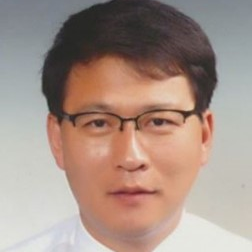Groundwater Modeling and Groundwater Contamination
A special issue of Water (ISSN 2073-4441). This special issue belongs to the section "Hydrogeology".
Deadline for manuscript submissions: closed (31 August 2023) | Viewed by 1399
Special Issue Editors
Interests: groundwater contamination; groundwater modeling; groundwater ecosystem; water policy; microplastic contamination in groundwater
Special Issues, Collections and Topics in MDPI journals
Interests: acid mine drainage; groundwater geochemistry; groundwater pollution; remediation methods; groundwater policy
Special Issues, Collections and Topics in MDPI journals
Special Issue Information
Dear Colleagues,
Groundwater contamination and modeling have always been an intriguing topic receiving both public and academic attention, the importance of which increased in recent years as risks in our subsurface environments arose. Many studies have focused on simulations and models concerning traditional contaminants such as heavy metals, BTEX, and nitrate in groundwater. A new strand that attracted much focus in recent years addresses emerging contaminants such as microplastics, which received little attention in the past when their adverse effects on the ecological environment and human health were veiled. This trend epitomizes an urgent need to expand research efforts to scrutinize groundwater pollution mechanisms to enhance contamination detection and understanding on quality management, where new types of contamination can arise at any time due to any cause.
This Special Issue, ‘Groundwater Modeling and Groundwater Contamination’, seeks to create a platform to review and present the advanced methodologies, current progress and challenges, and future opportunities in groundwater modelling and groundwater contamination. The journal Water serves the international community in all areas, not only concerning groundwater but also environmental science and environmental education. This Special Issue aims to encourage discussions highlighting both quantitative and qualitative analysis on the status of groundwater pollution and depletion under the effects of climate change for sustainable development. This Issue awaits submissions of original research articles delivering state-of-the-art modeling analysis and new findings on emerging contaminants to offer new perspectives for potential readers.
Prof. Dr. Heejung Kim
Prof. Dr. Chungwan Lim
Guest Editors
Manuscript Submission Information
Manuscripts should be submitted online at www.mdpi.com by registering and logging in to this website. Once you are registered, click here to go to the submission form. Manuscripts can be submitted until the deadline. All submissions that pass pre-check are peer-reviewed. Accepted papers will be published continuously in the journal (as soon as accepted) and will be listed together on the special issue website. Research articles, review articles as well as short communications are invited. For planned papers, a title and short abstract (about 100 words) can be sent to the Editorial Office for announcement on this website.
Submitted manuscripts should not have been published previously, nor be under consideration for publication elsewhere (except conference proceedings papers). All manuscripts are thoroughly refereed through a single-blind peer-review process. A guide for authors and other relevant information for submission of manuscripts is available on the Instructions for Authors page. Water is an international peer-reviewed open access semimonthly journal published by MDPI.
Please visit the Instructions for Authors page before submitting a manuscript. The Article Processing Charge (APC) for publication in this open access journal is 2600 CHF (Swiss Francs). Submitted papers should be well formatted and use good English. Authors may use MDPI's English editing service prior to publication or during author revisions.
Keywords
- groundwater quality management
- groundwater modelling
- groundwater contaminants
- climate change
- sustainable development
- water security






